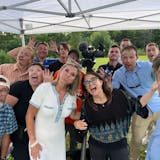Backed by more than $6 billion in venture capital, the millennial-aged leaders of Aging 2.0 are searching the world over for start-up companies with the best ideas on improving the lives of aging people. In Minnesota, John Fraser is now leading the charge, as a volunteer for San Francisco-based Aging 2.0. In his day job, Fraser, 34, is chief technology officer of Edina-based senior health care services company Lifesprk. A week and a half ago, Fraser launched the state's first Aging 2.0 chapter with a "pitch event" in Bloomington. Four start-ups presented their cases in hopes of eventually winning access to global capital and expertise through Aging 2.0. Since its founding in April 2012, Aging 2.0 has identified about a dozen companies to partner with its Generator Ventures funding arm.
Q: With so many businesses, nonprofits and government agencies trying to address problems in aging and health care, how is Aging 2.0 different?
A: What people do so often is associate aging with just health care. That's an incorrect way of looking at it. It's why I joined Lifesprk and why I wanted to participate in Aging 2.0. By taking care of people holistically, getting them more socially connected and driving innovative tools that allow them to live independently longer, people are happier and healthier. Regardless of your politics, this will save society money and help avoid the social degradation that occurs when people go through this roller-coaster crisis where they have an event and then more than likely they'll have another one, and pretty soon they're dependent. Aging 2.0 wants to be the bridge between the tech world and senior care aging industry, to find the best ideas and quickly move them into the pipeline.
Q: Is Aging 2.0 mostly focused on technology?
A: We're looking for anybody who's trying to flip aging upside down and do something different. It could be technology, it could be really creative services that are supported by technology. One classic example is telehealth, a big emerging trend in health care. There are literally thousands of companies trying to do telehealth. But Aging 2.0 would also look at a company that, rather than trying to create a product around telehealth and put it into the faces of existing health care companies, we're seeing companies that are innovating and saying, "I'll provide you nurse practitioners, I'll provide you the medical doctors and we'll do that through technologies that we can make it efficient and effective and do it from within people's homes." Perhaps it can be done without the insurer, or without the fear or the risk of taking someone out of their home and getting them to a clinic or the ER or the hospital. We can do it in a way that we don't have to deal with windshield time.
Q: Windshield time?
A: Windshield time is the concept of lost productivity to society. Forgetting who's paying for this — whether it's government or private insurance or out-of-pocket by families — it's wasted time getting from Point A to Point B in order to take care of people. Particularly people such as medical doctors, RNs and nurse practitioners could be doing valuable things with that time instead. By delivering services through technology or even leveraging a remote workforce that can facilitate the technology, it allows these NPs and medical doctors to work from their own offices at home or at the clinic between visits. It opens up a whole new opportunity not only to drive growth and entry-level jobs for people with less experience, but also it maximizes productivity of higher-skilled medical people, who are already in desperate shortage.
Q: How did you come to be the "ambassador" of Aging 2.0 in Minnesota?


